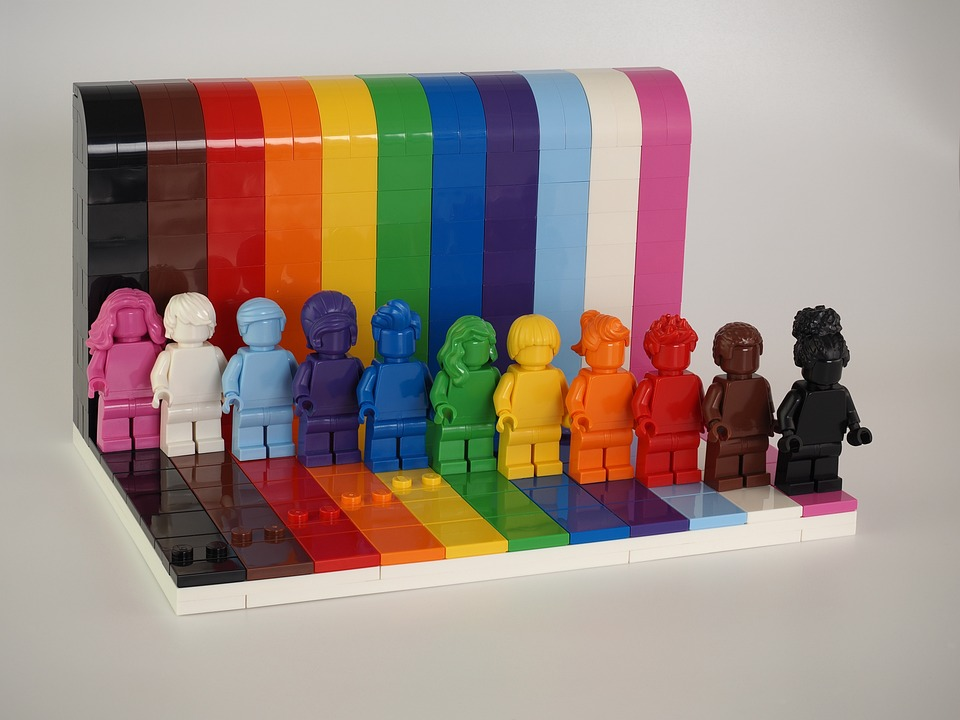3.1 Chapter Overview and Learning Objectives
Multiple genders have always existed. Even before you heard about the concept of gender dysphoria, many genders were still represented in society. While we typically see and discuss gender as a binary, this only represents the social construction of gender and not how it manifests in our daily lives.

Figure 3.1. Lego released a pride building set showing all the colors of the rainbow, this can show how some social growth and acceptance could shift social norms.
Let’s start with a thought exercise based on a recent ruling in Richmond Virginia. A federal judge ruled that gender affirming care is covered under the Americans with Disabilites Act. The ruling is in relation to recent attempts to block gender affirming care for transgender and non-binary individuals. The ruling is based off knowledge that transgender people experience significant negative effects including anguish due to the disparity between their gender identity and their sex assigned at birth. Many attempts are being made to block and restrict access to medical care, employment, and government and state benefits for transgender individuals. Now think about and answer or discuss these few questions:
- Do laws and policies that protect gender include all genders or just the binary? Why?
- If these laws were made not to discriminate based on gender, did they just mean cis women and men? Given this article, why would this assumption of binary be made?
- What other laws or policies do you know or have you heard about that could profoundly affect those outside the cisgender binary?
When we consider what you discussed or thought of above did you come to a conclusion of how policies and laws can impact different genders in positive and negative ways? Simply put, if a cis woman walks into a clinic for medical care, the facility cannot deny her care based on her gender identity, but if a trans woman walks into a clinic for medical care these recent bills mean that she could be denied access to the care she needs based on her gender identity. We can also apply these ideas to that of marriage equality, based solely on one’s gender identity, access, rights, and treatment in society can be different. This chapter will look at how gender identity, sexual identity and other intersectional aspects influence the lives of people and society.
3.1.1 Learning Objectives
After reading this chapter, you will be able to do the following:
- Discuss the gender identity formation process from a sociological perspective.
- Examine gender expression and standards of expression-changing using cross-cultural examples.
- Explain how cultural forces inscribe gender on the body.
- Relate concepts of sexuality, including sexual identities and orientations, to heterosexism and queering sexuality.
3.1.2 Preview of Key Terms
You will need some of these key terms to connect to this chapter and throughout this textbook. You can find the full list of key terms and their definitions at the end of this chapter. This list is not exhaustive, but it begins a deeper understanding of the concepts of gender identity, expression, and sexuality.
- gender identity: the gender identity that a person identifies with.
- social construct: an idea that has been created and accepted by the people in a society.
3.1.3 Licenses and Attributions for Chapter Overview and Learning Objectives
“Chapter Overview” by Heidi Esbensen is licensed under CC BY 4.0.
Figure 3.1. Photo by radioconcept is licensed under the Pixabay License.

